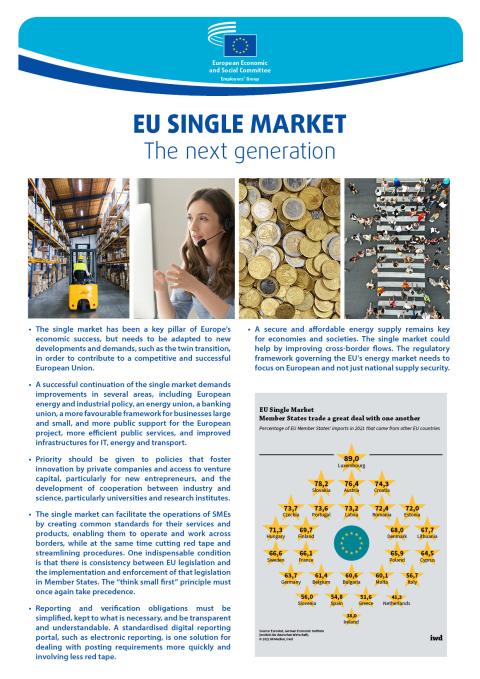European Economic
and Social Committee
EU Single Market – The next generation
Since the European single market was established, harmonisation and mutual recognition of standards have enabled companies to sell their products in a market of over 450 million people. It accounts for 61% of intra-EU trade by companies, and is the basis of Europe's economic prosperity, thus benefitting its citizens, consumers, workers and companies. The European Commission estimates that 25% of the EU's gross domestic product is generated by the internal market.
However, new developments, such as the digital transformation and the transition to a less carbon-intensive and more sustainable economy, require new adjustments, as do the changing needs of consumers, employees and companies and new geopolitical conditions.
The successful continuation of the single market requires improvements in several areas, including European energy and industrial policy, an energy union, a banking union, a more favourable framework for businesses large and small, and more public support for the European project, more efficient public services and improved infrastructure for IT, energy and transport.
With two landmark reports by former Italian prime ministers, Enrico Letta ("Future of the Single Market") and Mario Draghi (on the future of European competitiveness) being published in the first half of 2024, the EESC's Employers Group has summarised its key messages for the successful future of the EU's internal market in its one pager "EU Single Market: the next generation".
